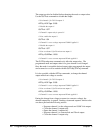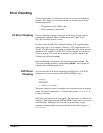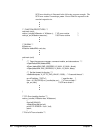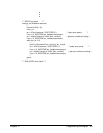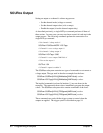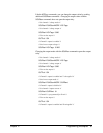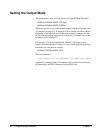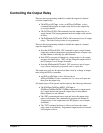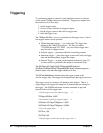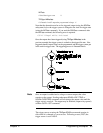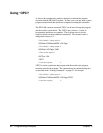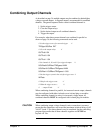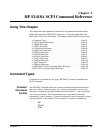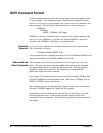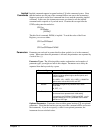
Triggering
To synchronize outputs to external events, backplane events, or software
events use the
TRIGger subsystem commands. Triggering an output from
the module involves four steps:
1. Set the trigger source.
2. Set one or more channels for triggered output.
3. Put the trigger system in the wait-for-trigger state.
4. Send the trigger event.
The
TRIGger:SOURce <source> command sets the trigger source. One of
four trigger sources can be specified.
• VXIbus backplane trigger — one of the eight TTL trigger lines
defined in the VXIbus P2 connector. The lines are named
*TTLTRG0 through *TTLTRG7. Any one of these trigger lines
may be used as a trigger source.
• Software trigger — generated within the controlling program.
• Immediate trigger — places the trigger system in the wait-for-trigger
state and then immediately triggers the output.
• External Trigger — an input on the terminal module (see page 35).
Use this source to synchronize the outputs to an external event.
The
SOURcen:VOLTage[:LEVel]:TRIGgered[:AMPLitude] and
SOURcen:CURRent[:LEVel]:TRIGgered[:AMPLitude] commands program a
channel output value when the trigger conditions are met.
The
INITiate:IMMediate command places the trigger system in the
wait-for-trigger state. The trigger event depends upon the trigger source set.
The trigger system is common to all channels in the module. That is, a
single trigger event triggers the output on all channels that are waiting for
the trigger. The
SOURce subsystem contains commands to put each
channel in the wait-for-trigger state.
/* Set the trigger source for software trigger */
TRIGger:SOURce HOLD
/* Set channels 1 and 2 for triggered output */
SOURce1:VOLTage:TRIGgered 1.5000
SOURce2:VOLTage:TRIGgered -2.5000
/* Close the output relays */
OUTPut1 ON
OUTPut2 ON
/* Put the trigger system in the wait-for-trigger state */
54 Programming Examples Chapter 2



